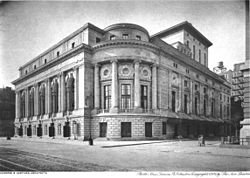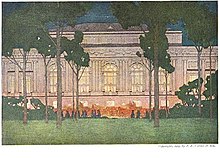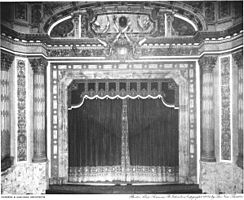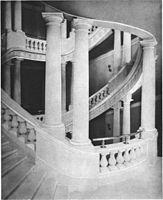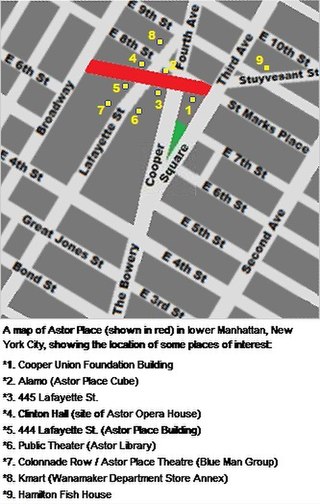
The Ziegfeld Follies were a series of elaborate theatrical revue productions on Broadway in New York City from 1907 to 1931, with renewals in 1934 and 1936. They became a radio program in 1932 and 1936 as The Ziegfeld Follies of the Air.

Mary William Ethelbert Appleton Burke was an American actress who was famous on Broadway and radio, and in silent and sound films. She is best known to modern audiences as Glinda the Good Witch of the North in the Metro-Goldwyn-Mayer movie musical The Wizard of Oz (1939).
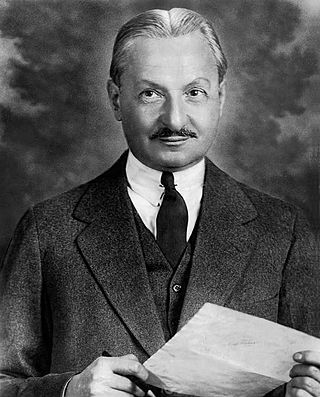
Florenz Edward Ziegfeld Jr. was an American Broadway impresario, notable for his series of theatrical revues, the Ziegfeld Follies (1907–1931), inspired by the Folies Bergère of Paris. He also produced the musical Show Boat. He was known as the "glorifier of the American girl". Ziegfeld is a member of the American Theater Hall of Fame.

Carrère and Hastings, the firm of John Merven Carrère and Thomas Hastings, was one of the outstanding American Beaux-Arts architecture firms. Located in New York City, the firm practiced from 1885 until 1929, although Carrère died in an automobile accident in 1911.

The New Amsterdam Theatre is a Broadway theater at 214 West 42nd Street, at the southern end of Times Square, in the Theater District of Manhattan in New York City. One of the first Broadway venues to open in the Times Square neighborhood, the New Amsterdam was built from 1902 to 1903 to designs by Herts & Tallant. The theater is operated by Disney Theatrical Productions and has 1,702 seats across three levels. Both the Beaux-Arts exterior and the Art Nouveau interior of the building are New York City landmarks, and the building is on the National Register of Historic Places.
Chicago Musical College is a division of the Chicago College of Performing Arts at Roosevelt University.

The Ziegfeld Theatre was a single-screen movie theater located at 141 West 54th Street in midtown Manhattan in New York City. It opened in 1969 and closed in 2016. The theater was named in honor of the original Ziegfeld Theatre (1927–1966), which was built by the impresario Florenz Ziegfeld Jr.

Joseph Urban was an Austrian-American architect, illustrator, and scenic designer.

The Lunt-Fontanne Theatre, originally the Globe Theatre, is a Broadway theater at 205 West 46th Street in the Theater District of Midtown Manhattan in New York City. Opened in 1910, the Lunt-Fontanne Theatre was designed by Carrère and Hastings in the Beaux-Arts style for Charles Dillingham. The theater is named after theatrical couple Alfred Lunt and Lynn Fontanne; its original name was inspired by that of the Globe Theatre, London's Shakespearean playhouse. The current configuration of the interior, dating to 1958, has about 1,519 seats across two levels and is operated by the Nederlander Organization. The facade is a New York City landmark.

The Lyric Theatre was a Broadway theatre built in 1903 in the Theater District of Manhattan in New York City. It had two formal entrances: at 213 West 42nd Street and 214-26 West 43rd Street. In 1934, it was converted into a movie theatre which it remained until closing in 1992. In 1996, its interior was demolished and the space was combined with that of the former Apollo Theatre to create the Ford Center, now the new Lyric Theatre. Both the 42nd and 43rd Street facades of the original Lyric were preserved and today form the front and back entrances of the modern Lyric Theatre.

The Earl Carroll Theatre was a Broadway theatre at 753 Seventh Avenue near 50th Street in the Theater District of Midtown Manhattan in New York City. Built by impresario Earl Carroll and designed by architect George Keister, it opened on February 25, 1922, and was highly successful for a number of years until it was demolished and rebuilt on a lavish scale. It reopened in August 1931 with Carroll's billing that it was "the largest legitimate theater in the world." However, the facility's operating costs proved astronomical and it went into foreclosure in early 1932 after which it was acquired by producer Florenz Ziegfeld who renamed it the Casino Theatre. The Casino was the site of a very successful revival of Ziegfeld's production of Show Boat in 1932. However, Ziegfeld too went bankrupt only a short time later. The property was auctioned in foreclosure on August 18, 1933 to the Mutual Life Insurance Company for $1 million.

The Alwyn Court, also known as The Alwyn, is an apartment building at 180 West 58th Street, at the southeast corner with Seventh Avenue, in the Midtown Manhattan neighborhood of New York City. The Alwyn Court was built between 1907 and 1909 and was designed by Harde & Short in the French Renaissance style. It is one of several luxury developments constructed along Seventh Avenue during the late 19th and early 20th century.

Marjorie Bonner was an American dancer and actress who was a member of the Ziegfeld Follies of 1908. Produced by Florenz Ziegfeld, the Follies were presented in June 1908, at the Jardin de Paris, atop the New York Theatre.

The Stephen A. Schwarzman Building, commonly known as the Main Branch, 42nd Street Library or the New York Public Library, is the flagship building in the New York Public Library system in the Midtown Manhattan neighborhood of New York City. The branch, one of four research libraries in the library system, contains nine separate divisions. The structure contains four stories open to the public. The main entrance steps are at Fifth Avenue at its intersection with East 41st Street. As of 2015, the branch contains an estimated 2.5 million volumes in its stacks. The building was declared a National Historic Landmark, a National Register of Historic Places site, and a New York City designated landmark in the 1960s.

The International Theatre was a theatre located at 5 Columbus Circle, the present site of the Deutsche Bank Center in Manhattan, New York City.
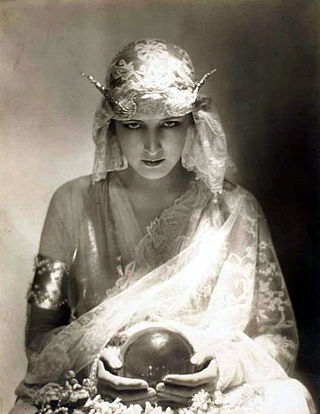
Dolores or Rose Dolores was an English model. She is recognised as the first celebrity clothes model and has been credited with inventing the blank hauteur of the modern fashion model. Florenz Ziegfeld, Jr. called her "the loveliest showgirl in the world". She was known for her commanding stage presence and became the star of the Ziegfeld Follies from 1917 until her retirement in 1923. She lived the rest of her life in Paris and during the Second World War helped Allied airmen escape the German occupation.

The Ziegfeld Theatre was a Broadway theatre located at 1341 Sixth Avenue, corner of 54th Street in Manhattan, New York City. It was built in 1927 and, despite public protests, was razed in 1966.
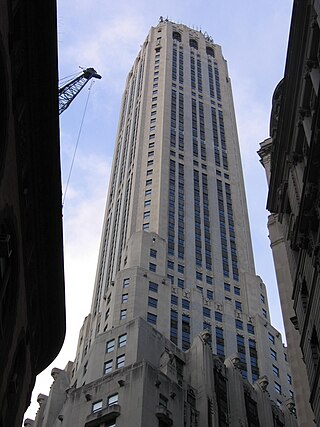
Exchange Place is a street in the Financial District of Lower Manhattan, New York City. The street runs five blocks between Trinity Place in the west and Hanover Street in the east.
5 Columbus Circle is an office building on the southeast corner of Broadway and 58th Street, just south of Columbus Circle, in the Midtown Manhattan neighborhood of New York City, New York, United States. Designed by Carrère and Hastings in the Beaux-Arts style, it is 286 feet (87 m) tall with 20 stories.
